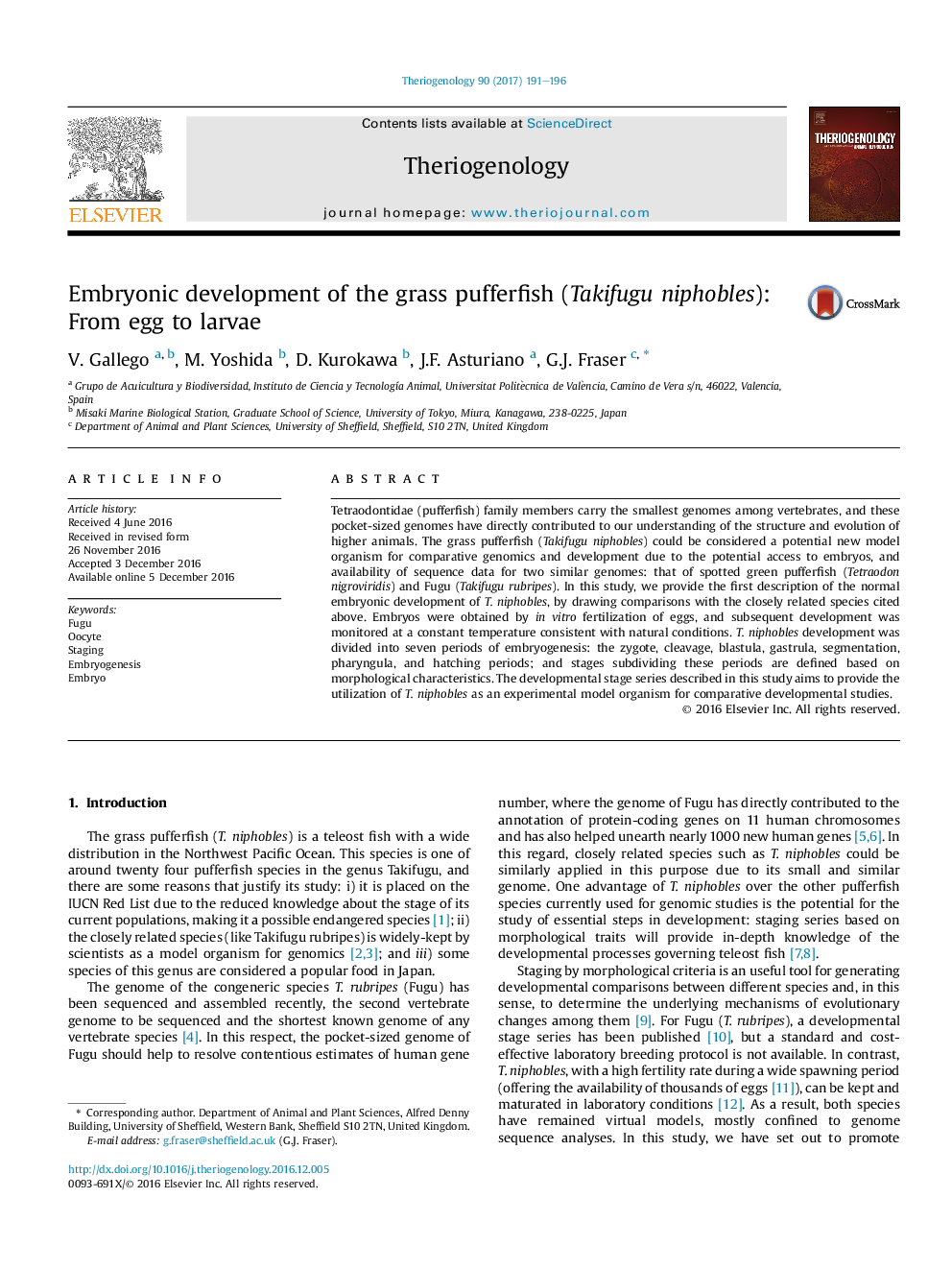| Article ID | Journal | Published Year | Pages | File Type |
|---|---|---|---|---|
| 5523135 | Theriogenology | 2017 | 6 Pages |
Tetraodontidae (pufferfish) family members carry the smallest genomes among vertebrates, and these pocket-sized genomes have directly contributed to our understanding of the structure and evolution of higher animals. The grass pufferfish (Takifugu niphobles) could be considered a potential new model organism for comparative genomics and development due to the potential access to embryos, and availability of sequence data for two similar genomes: that of spotted green pufferfish (Tetraodon nigroviridis) and Fugu (Takifugu rubripes). In this study, we provide the first description of the normal embryonic development of T. niphobles, by drawing comparisons with the closely related species cited above. Embryos were obtained by in vitro fertilization of eggs, and subsequent development was monitored at a constant temperature consistent with natural conditions. T. niphobles development was divided into seven periods of embryogenesis: the zygote, cleavage, blastula, gastrula, segmentation, pharyngula, and hatching periods; and stages subdividing these periods are defined based on morphological characteristics. The developmental stage series described in this study aims to provide the utilization of T. niphobles as an experimental model organism for comparative developmental studies.
